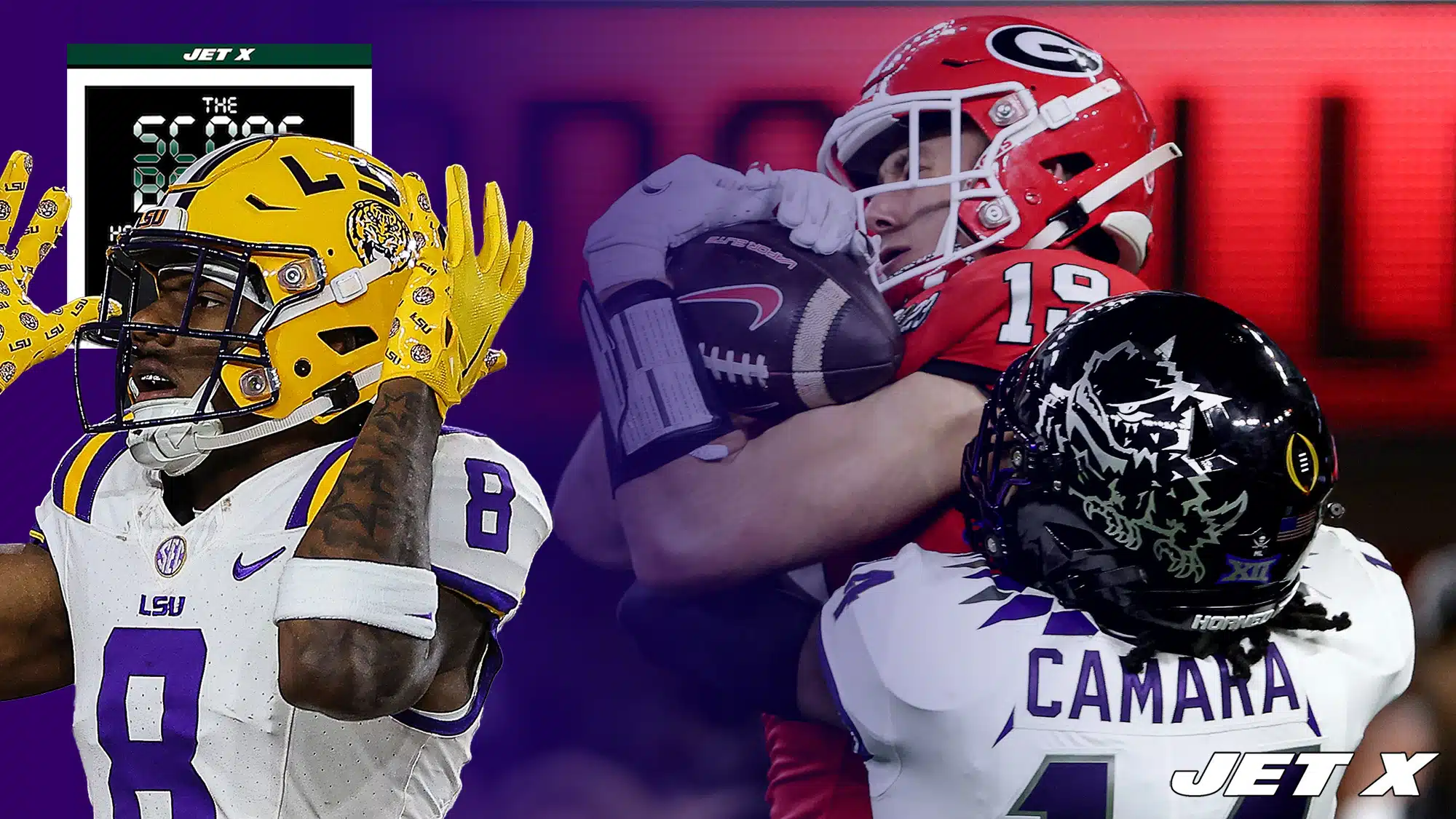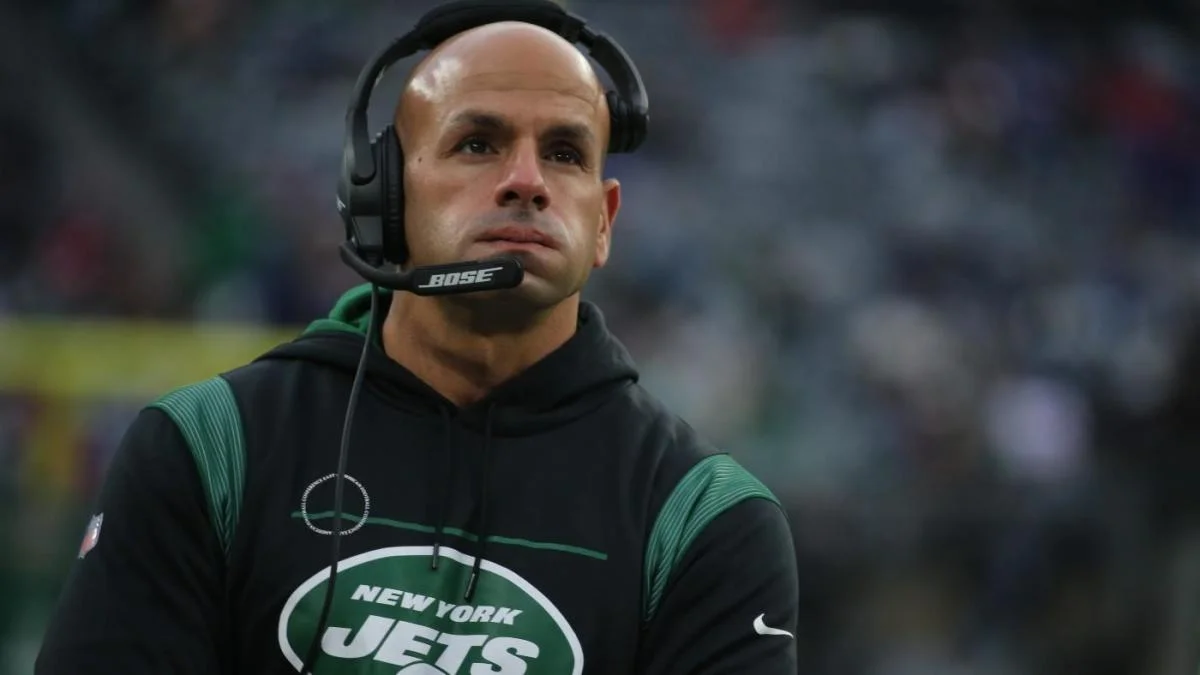We looked last week at what to expect if the Jets choose a wide receiver with the 10th overall choice in the NFL Draft the following week.
I looked back at the players chosen in that range to offer some reasonable hopes because I feel that a lot of the expectations that fans and the media place on these decisions seem arbitrary.
I’m going to attempt the same thing with Georgia tight end Brock Bowers today. Bowers is a highly respected prospect at tight end. It is predicted by many mock drafts that the Jets will select Bowers with the tenth overall pick.
What reasonable goals should Bowers aim toward then? I believe we already have them, believe it or not. I outlined them in my post that summarized what to expect from wide outs selected in the range the Jets are choosing to choose.
Although I recognize that tight ends typically contribute more to the blocking game than wide receivers, let’s be real. For his blocking ability, no one is selecting a tight end in the top 10. Actually, the majority of justifications for selecting Bowers so highly essentially boil down to this: “Don’t consider him a tight end.” Consider him to be a weapon for receiving. Therefore, I believe it is fair to evaluate him using the same standards as we would a wide receiver.
What then are these anticipations?
Just seven of the 36 receivers chosen between No. 5 and No. 15 since the year 2000 had more than 1,000 yards in their debut season. The individual Garrett Wilson is a positive outlier. For rookies, the medians are 3 touchdowns, 549 yards, and 41 catches. If a rookie wide receiver exceeds those thresholds, the spread is beaten.
What about in the long term?
For the sake of sample size, I eliminated players from the list who have played in the NFL for fewer than four seasons. Throughout his career, the median player averaged 42.1 yards per game. We are talking about an average of 716 yards each season when we multiply that by 17 games.
That sounds not too horrible. Does it not? For Bowers to be considered a viable option at his position, he only needs to gain about 550 yards in his rookie season and slightly over 700 yards annually throughout his career. Even so, it’s not elite production.
You would be right if you were referring to wide receivers. But for tight ends, those stats would put him in pretty exclusive company.
Out of all the tight ends selected in the first round since 2000, only five had more than five49 receiving yards in their first campaign. If we modify per-game averages to take into consideration rookies who only participated in 16-game seasons, the number only increases to six.
Even though 42.1 yards per game seems doable, only 14 tight ends with at least 64 starts since the year 2000 have averaged that throughout the course of their careers. For comparison, the same list includes 115 wide receivers.
Naturally, a player’s early and late career declines and diminished roles might distort averages. Now let’s examine the seasons since 2000 where tight ends have surpassed the 716-yard threshold. Just eleven tight ends have completed the feat five or more times. Tony Gonzalez, Travis Kelce, Zach Ertz, Rob Gronkowski, George Kittle, Greg Olsen, Jimmy Graham, Kellen Winslow II, and Chris Cooley are the players in question.
You could argue that this could refute the notion that Bowers must unquestionably be a potential Hall of Famer on par with Kelce or Kelley in order for his efforts to be successful. In addition to a few below-average players like Winslow and Cooley, the roster is full of guys with Canton-caliber skill like Gonzalez, Kelce, Gates, and Gronkowski. However, the list remains very elite. Though we are used to wide receivers frequently busting it, 716 yards doesn’t seem like much. However, tight ends don’t typically produce at the same level. While maintaining it for a player’s prime may be more to ask than breaking that figure in a career year. 79 wide receivers recorded at least five seasons with at least 716 yards within that same time period.
All of this indicates how little leeway a team has when selecting Bowers among the top 10. In terms of receiving yardage in 2023, the wide receiver who placed 27th achieved over 1,000 yards. With 984 yards, the tight end who placed second in receiving yardage finished.
What does this signify? That’s exactly how it sounds. Even though he is the 27th most productive wide receiver and was subject to a selection prior to the previous season, he still received excellent value. That would be far more than you would receive from the wide receiver who is ranked 10th in productivity.
This illustrates one of the dangers involved with ranking Bowers among the top ten. Perhaps he won’t need to consistently log 1,000 yards and be selected in the top ten to be considered for the Hall of Fame, but he will have to rank among the top twelve tight ends of the previous 25 years in terms of production. It suffices to be proficient at wide receiver. Bowers will have to be very good.
The thing about the NFL Draft is this. Despite all the angst front offices experience throughout the league, scouting departments often perform a respectable job differentiating between good and terrible prospects. It’s true that there are well-known early round busts and late round steals. But in nearly every Draft class, the greatest proportion of players who go on to have successful careers are found in the first round. There are the second most in the second round, and so on.
/cdn.vox-cdn.com/uploads/chorus_image/image/73144461/usa_today_22362754.0.jpg)
The league isn’t quite as adept at distinguishing between the very best and the merely competent. Only three of the eleven tight ends I listed earlier—Gonzales, Olsen, and Winslow—were selected in the first round. Olsen’s applicability is even in doubt because he was selected 31st at the very end of the first round.
This indicates a more general pattern. NFL teams typically have a lot of overconfidence in their ability to locate great talent. Details are provided in an enduring article published ten years ago on our sister site Vox.
Economists Cade Massey and Richard Thaler have demonstrated in a number of studies that historically, the likelihood that the player selected first (Watkins) will do better than the player selected third (Beckham) is only about fifty-five percent.
I searched for players who were picked since 2000 and were selected to the First Team All Pro at least twice using the Stathead database (punters and kickers excluded). Of the 95, 59 were selected in the first round. Only half of them, nevertheless, were chosen as the top 10.
Once more, this indicates that the league does a decent job of separating players who are capable of playing at a high level from those who are not. It is remarkable, to be sure. Thirty percent of the list and fewer than four percent of drafted players are in the top ten picks. However, it also implies that it is more difficult to pinpoint the absolute greatest game-changers. The odds of you being in the top 10 are the same as they were later in the first round.
This returns us to Bowers. He is a highly regarded prospect and a highly decorated tight end. But as we’ve seen, in order to support this choice, he must rank among the best tight ends of the previous 25 years. That form of projection, meanwhile, is intrinsically challenging and error-prone. Expectations should be very high—possibly higher than any team should feel comfortable projecting, given the position he plays and his scouting history.
The Jets should give all of this some thought when they decide next week.



